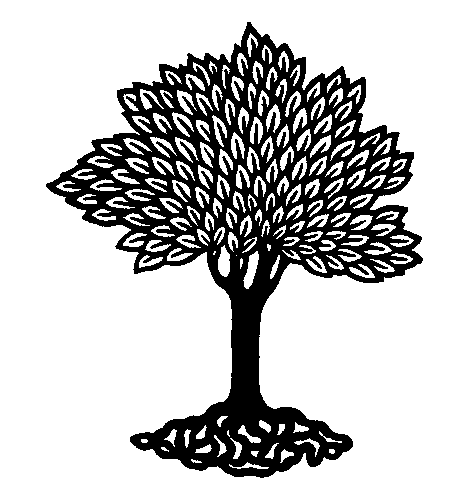
 |
Plant Taxonomy (BIOL308) - Stephen G. Saupe, Ph.D.; Biology Department, College of St. Benedict/St. John's University, Collegeville, MN 56321; ssaupe@csbsju.edu; http://www.employees.csbsju.edu/ssaupe/ |
Overview of Vascular Plant Taxonomy
I. Embryophytes � Land Plants
A. Characters
cuticle
resting embryo in sporophyte
multicellular sporophyte
multicellular reproductive structure
thick wall spores
B. Classification - traditionally two groups
Bryophytes (mosses, liverworts, hornworts)
Tracheophytes (vascular plants) � ferns, quillworts, horsetails, gymnosperms, angiosperms
C. Cladogram (on board)
II. Vascular Plants (Tracheophytes)
A. Characteristics
These are plants that possess vascular
(transport) tissue; i.e.,
xylem and phloem. Other characteristics of the group include branched sporophytes,
dominant sporophyte phase of the life cycle, and lignified walls. (Note: Although these
are called vascular plants, other plant groups, specifically the mosses, have some
vascular tissue, though it's not as well developed). The vascular plants evolved about 420 million years ago (mya). The
angiosperms arose later during the Jurassic (ca. 120 mya).
Branched sporophytes
Sporophyte dominant
Lignified wall
Arose 420 mya
B. Classification
Cladistic evidence suggests that there are six
major groups of tracheophytes. These are:
Ferns
Quillworts
Whisk ferns
Horsetails
Club and spike mosses
Seed plants (Spermatophytes) � angiosperms & gymnosperms
These groups (with the exception of the quillworts) are considered to be divisions of vascular plants by Cronquist (Polypodiophyta - the ferns; Psilotophyta - whisk ferns; Equisetophyta - horsetails; Lycopodiophyta - club mosses and quillworts); Pinophyta (or gymnosperms) – "cone" bearing plants; and Magnoliophyta (or angiosperms) - flowering plants. note the standard ending for division, -ophyta.).
Cladistic analyses essentially support these groupings. The main exception is that the Pinophyta, which has always been recognized as a diverse, polyphyletic assemblage, is separated into four groups - cycads, conifers, ginkgos, and gnetophytes - yielding nine major groups of vascular plants.
The angiosperm and gymnosperm (including cycads, gnetophytes, conifers and ginkgos) groups (clade) are characterized by producing and dispersing by seeds, whereas the remainder disperse only via spores. (Quick review - both spores and seeds are reproductive units. The major differences are that spores are generally smaller than seeds and lack a pre-formed embryo.)
C. Cladistic primer - we briefly discussed and defined monophyletic, paraphyletic, polyphyletic, node, clade, sister group
III. Seed Plants
A. Characters
Seeds from ovule (vs. spores)
Vascular cambium = secondary growth = wood
Arose 350 mya
B. Groups
Angiosperms � flowering plants
Gymnosperms � "cone" bearing
IV. Angiosperms
A. Characters
B. Classification
1. Traditional
two major groups: monocots and dicots
first suggested by John Ray (1686 - 1688)
Cronquist - treats as a class; Liliopsida (monocots), Magnoliopsida (dicots)
Thorne - treats as a subclass; Dicotyledonae (dicots), Monocotyledonae
check out Table 1. Note - no one single feature in monocots is absent in dicots; rather, a combination of features distinguishes monocots and dicot
Table 1: Comparison of features of Traditional Monocots and Dicots
Feature
Dicot
Monocot
Number of species 165,000 50,000 Growth form woody or herbaceous mostly herbaceous Embryo cotyledons two cotyledon one (best character to distinguish) Endosperm present or absent often present Floral parts 4 or 5-merous 3-merous Pollen grains tricolpate usually monocolpate Leaves net (reticulate) veined (some exceptions like Plantago) parallel veined (some exceptions like Trillium) Petiole common, seldom sheaths stem not common, petiole often sheathing Vascular system definite # bundles, ring (like broccoli) numerous, scattered (like asparagus) Secondary growth typically present (cambium) absent Mature root system primary or adventitious, strong taproot often present wholly adventitious (primary root system of short duration, fibrous roots common, usually without strong taproot) Cell walls glucan xylan Gynoecium apo- or syncarpous mostly apocarpous 2. Recent/Cladistic Views
cladistic analyses don�t support this separation
monocots are monophyletic � form a tight, distinct group, much less diverse than dicots.
- Monocots appear to be a monophyletic group, since they share so many features in common. It is improbable that this combination arose more than once. Monocots were probably derived from a primitive dicot ancestor (perhaps similar to Nymphaeaceae) during the Cretaceous.
dicots are not monophyletic (paraphyletic) � therefore divided into other groups
Dicots into three major groups:
Eudicots � those that show traditional dicot features, this is a distinct monophyletic group
Magnoliids � woody trees, show primitive features. Includes families such as the Magnoliaceae
Basal families � most primitive families
recent work shows sister group to rest of angiosperms
no ethereal oils
elongate vessels
vessel less
carpels sealed by secretion
includes Amborellaceae, Nymphaeaceae, Illiciaceae
4. Cladogram - check out the Angiosperm Phylogeny Website
C. Evolutionary trends. During our discussions we will mention evolutionary trends among the flowering plants. These ideas have been advanced largely by the "evolutionary classifiers" such as Cronquist, Thorne and their counterparts. The cladists might argue that these trends are recognized simply because they match the ideas of the classifiers (i.e., circular reasoning) and that true trends can only be deciphered by cladistic analyses. Nevertheless, these are a good starting point for studying the angiosperms.
- woody → climbing or herbaceous
- vessel-less → vessels
- perennial → biennial or annual
- chlorophyll present → absent
- evergreen → deciduous
- leaves simple → compound
- flowers insect-pollinated → flowers wind-pollinated
- flowers solitary → inflorescences
- flowers with petals → apetalous
- petals free → connate
- pollen monosulcate → pollen trisulcate
- actinomorphic → zygomorphic
- hypogynous → epigynous, perigynous
- stamens poorly differentiated → stamens differentiated into anther and filament
- carpels many → few
- carpels sealed by secretion → carpels sealed during development
- fruit a follicle → capsule, berry, drupe, etc.
V. The Importance of Families. We will focus on studying families for several reasons:
References:
|
| Top | Plant Tax. Home | SGS Home | Disclaimer | |
Last updated:
08/20/2007 / � Copyright by SG
Saupe